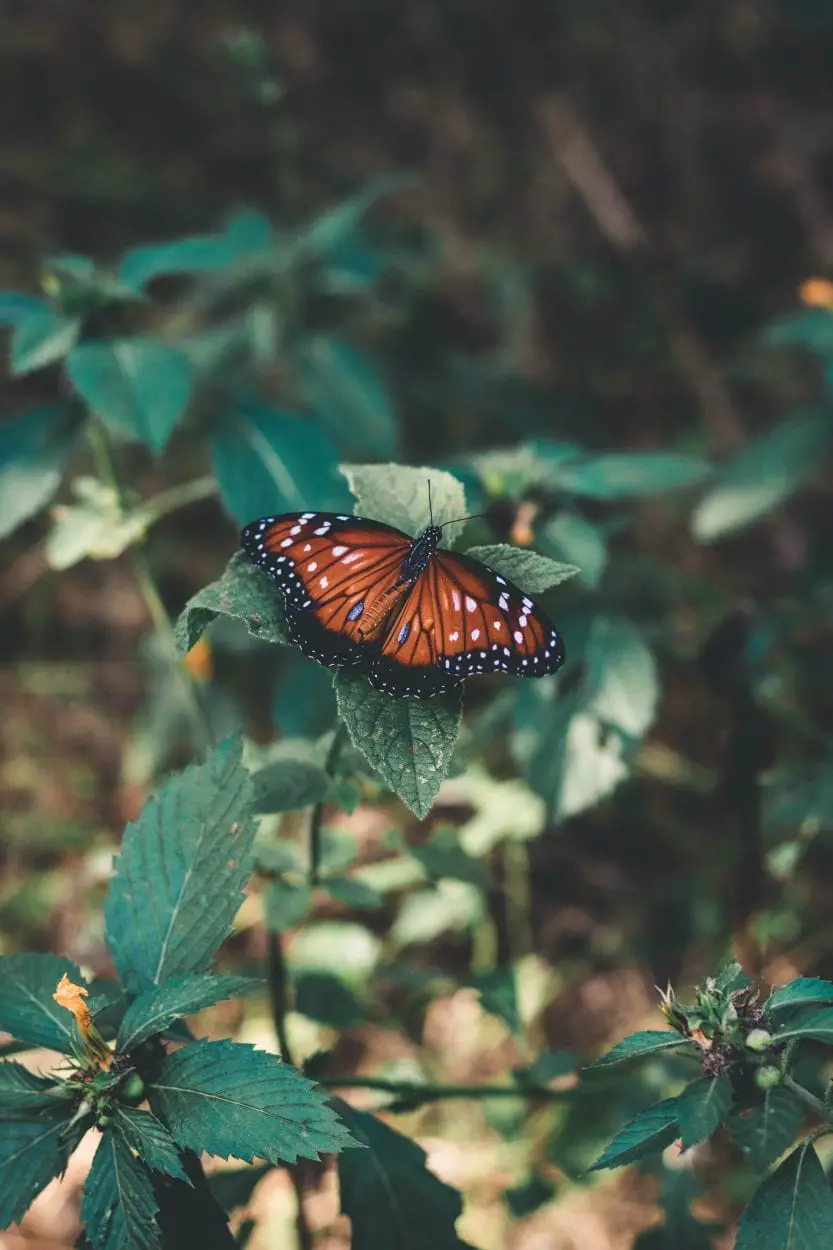Blue is such a beautiful color and it has rich cultural, mythological and symbol history behind it. In many cultures, it is considered an auspicious color. On the other hand, in western literature, it is associated with the emotion of sadness. However, this article is not about the color blue but things that are blue. Especially those things that are found in nature. Animals which are blue in color are pretty rare in nature, however, they exist. Blue jay and Blue poison dart frog come to mind when one talks about blue living things. And if you’ve seen the pictures of these animals, you’ll realize how beautiful they truly are.
Another very beautiful living being that is blue in color is the Mazarine blue butterfly. Butterflies, in general, are all very pretty but this one steals the cake. One falls in love with one look at it. Butterfly collectors know the real value of this butterfly as it is quite rare. It’s a marvelous thing of beauty. Of course, there are other butterflies which are blue in color or have some of it on their wings. Yet, they cannot be compared to Mazarine blue. The scientific name of this butterfly is Cyaniris semiargus. It’s a Palearctic butterfly which is in the category of Lycaenidae. ‘Palearctic’ here refers to one of the 8 biogeographic realms into which the world is divided for classification purposes. This region includes all of Eurasia north, the foothills of Himalayas as well as some of North Africa.

Cyaniris semiargus or the Mazarine blue butterfly has nine subspecies which are located in different regions of Europe, Asia and North Africa. Cyaniris semiargus semiargus can be found in Europe, Caucasus regions, Siberian countries and towards the east of northern Asia. It is the commonest of all subspecies. The second subspecies is Cyaniris semiargus altaiana, which can be found in Russian mountains, Kazak mountains, Transbaikalia. The third one is Cyaniris semiargus amurensis, which is found near Asian rivers, Ussuri region and Japan. The fourth subspecies of the Mazarine blue butterfly is Cyaniris semiargus atra, which is found stuttering around in Kazak, Russian mountains and Mongolia.
The fifth subspecies called the Cyaniris semiargus jiadengyunus is not as common as others and is only found in one region – the Russian mountains. The sixth subspecies is Cyaniris semiargus maroccana, named after the country in which it is found – Morocco. The seventh subspecies is Cyaniris semiargus tartessus, which is found in Spain. The eight species is also found in Spain and is called Cyaniris semiargus transiens. The last one is named Cyaniris semiargus uralensis, which is found in Urals.
As none of the species are found in either North America or South America, they are quite popular among the butterfly collectors there.
Distribution of the mazarine blue butterfly
As you can conclude from the listing of the subspecies above, the mazarine blue butterfly is mostly found in European countries. Some of the subspecies are also found in countries such as Morocco which are located in Northern Africa. Even northern Asian countries such as Russia and middle-eastern countries are home to this magnificent butterfly. In some countries, however, this species of butterfly is going extinct. For instance, Britain is one country where the mazarine blue butterfly is supposedly extinct. Although, there have been some reports of its sightings, but they are isolated. The disappearance of this butterfly in Britain can be dated back to 1910s. The reasons behind the extinction of this species and the attempts of official bodies to reintroduce it back to the country will be discussed later in the article.
If you’re a resident of the country of Britain and are an avid admirer of butterflies, then this may be bad news for you. To enjoy its sight, you’d either have to go to another region such as Altai mountains and Sayan mountains, or look at its dead specimens. However, for admirers of this beautiful insect, there is still hope as bodies such as UNESCO are doing their best to reintroduce this species in England.

Habitat of the mazarine blue butterfly
To get a glimpse of this beautiful blue creature, one will have to wander off to meadows, pastures, grasslands and grassy damp areas with an abundance of flowers. Thus, if you’re looking to get a glimpse of this butterfly in the city, you’re probably going to be disappointed. It’s better that you take a day off from work and explore the meadows, pastures, grasslands and flowery areas in the wild. It’s more likely that you’ll find this butterfly in those regions as it is more commonly found there. After all, those are its habitat. Another interesting thing about the mazarine blue butterfly is that it is more likely to be found in non-fertilized places, which are not used for fodder production.
Visual description of the mazarine blue butterfly
The wingspan of this amazing species of butterfly is a bit more than the average wingspan of most species of butterfly. There is also not much difference between the wingspan of its male specimens and female specimens. Both have the wingspan of 32-38 mm. However, there is a difference of color on their wings between the two sexes of the butterfly. In other words, this species of butterfly exhibits sexual dimorphism. Sexual dimorphism refers to the condition in animals and insect wherein they exhibit a difference in biological characteristics based on the sex apart from the difference in sexual organs.
The male mazarine blue butterfly has deep blue wings with a heavy vein-like pattern. Moreover, the diameter of wings of the male butterfly is slightly larger than its female counterpart. However, the difference of size between the wings of the two sexes isn’t as significant as in other species of butterfly. The male butterfly’s upper side of the wings have white fringes demarcated by black borders. On the other hand, the female butterfly’s wings have brown borders. The underside of the wings has pale brownish or greyish color. There are also black spots present on the underside of the wings. These spots are further surrounded by blue and white scales.
Butterfly experts often compare this species to those of the common blue and Grecian Helena. However, both sexes of this species do not have orange markings. On top of that, the body color of this species is violet or pale brown. Thus, it does look similar to the aforementioned species but can be distinguished from them based on the body color and the lack of orange markings.
Another species to which the mazarine blue butterfly is very similar is Cupido minimus. Also known as the small blue butterfly, this species is also found in the Palearctic realm and belongs to the Lycaenidae family. The outward difference between these two species is very miniscule. The angle of the black spots on the underside of the hindwings of the mazarine blue butterfly is obtuse. In the small blue butterfly’s case, the angle is acute. Only butterfly experts can distinguish these two butterflies from each other.
The larva of this species is yellow green in color. It also has dark lines, fine hairs and brownish spiracles. When the butterfly is in its pupa stage, it is olive green in color and is attached to the plant, on which it feeds, with a silk girdle.

Biology of the mazarine blue butterfly
The mazarine blue butterfly produces one brood annually. It is a young larva in the winters and blossoms into an adult in May. The adult flies till August. The food of the mazarine blue caterpillars is mainly trefoil, red clover, broom, sweet clover, etc.
The threat of extinction
This amazing species of butterfly has already gone extinct in Britain. As of today, it also faces the threat of extinction in other regions, especially those with heavy industries. One possible reason of the extinction of the species is the increased use of fertilizers and insecticides. However, studies are still being conducted. In some studies, it has been found that air pollution and soil pollution could have been contributing factors to the extinction of this species in Britain. Britain has been an industrial hotspot since the 18th century. Thus, it is only natural that there would be detrimental effects of its industrial activity on nature.
Efforts are being made by organizations such as UNESCO to reintroduce this species of butterfly to Britain. Moreover, many non-profit organizations are working tirelessly to ensure that what happened in Britain doesn’t repeat in other regions. There have to be checks on the use of fertilizers and insecticides. But above all, there have to be checks on the pollution of air and soil by heavy industries. The mazarine blue butterfly is truly a work of art by mother nature. Among all things that are blue, it is surely one of the pretties. However, it is a shame that due to careless human activity, this species is facing the threat of extinction. In a sense, it is now our moral duty to prevent this species from dying out.



